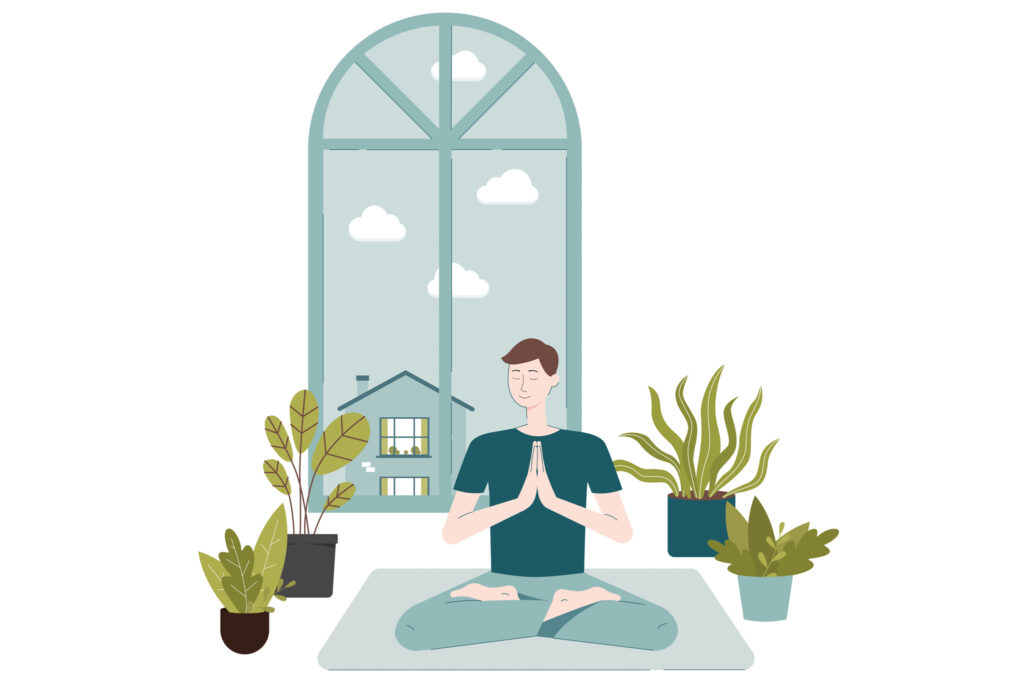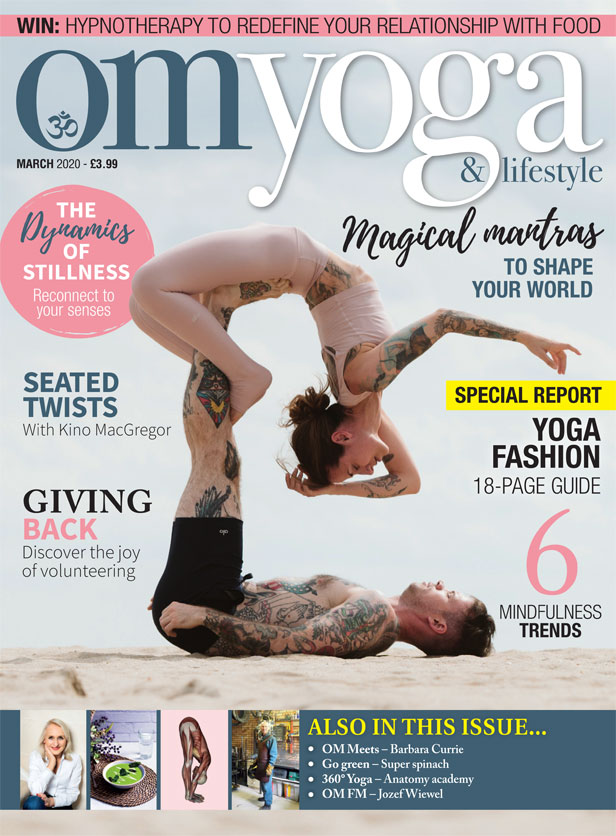
Building your house of truth
How firm foundations, and our feet, can help to build a structure of strength and integrity. By Gregory Ormson
Yoga transforms and creates life and purpose from the ground up. I started yoga, and many of us did, because ofthe healing inherent in its movements or asanas. But even a casual experience of yoga teaches that asana is only one part of yoga’s eightfold path. Yogis called the eight aspects of yoga ‘limbs’, because all are connected to the same trunk. Yoga’s blueprint is steeped in an elegant heritage which admonishes the yogi from seeds of an encounter born in stillness and realised in the body. Yogatecture is the word I use to name this blueprint. Starting at the foundation, the yogi builds their house of many rooms (a mansion) with conscious attention to the gift of life.
The process is simple, and the blueprint is clear; start with one conscious breath followed by another. This is how we build a sacred and sound structure. It is the physical, non-physical, and
metaphysical work of yoga.
Builders say the most important structural aspect of a building is its foundation. When building, it’s necessary to create a strong foundation. In the north, if the foundation is not set below the frost line, the freeze and thaw cycles of earth will crack its ground which starts the slow process of destruction.
BKS Iyengar spoke directly on foundational work in Light on Life: The Yoga Journey to Wholeness, Inner Peace, and Ultimate Freedom. “In each asana, if the contact between body and the
floor, the foundation, is good, the asana will be performed well. Always watch your base: Be attentive to the portion nearest the ground. Correct first from the root. The standing poses are meant to begin providing this foundation for life.”
Moving prayer
Asana is not only foundation building in yoga, it’s the ground and heart of an embodied spiritual practice because asana is a moving prayer. Many people pray in church, in nature, or in some other religious setting, but does their prayer include movement? Working as a Protestant clergy for 14 years, I observed most prayer was offered while standing still, sitting still, or kneeling.
But in asana, we open our body first and spirit follows. This opens us to prayer as an expression of gratitude in motion. We stretch from the source, aim our prayer at the source, and our asana then becomes our moving prayer: a physical, mental, and spiritual act.
Prayers are not asking for something; rather, they are a full mind, body, and spirit response. In that way, if asana is prayer, a yogi’s motivation for mastering asana is not selfish or egoistic, it’s a way of making our prayer as complete as we can because it’s our response in gratitude.
Starting with the foundation, we train our bodies with strong standing postures built on good intentions and conscious living patterns. Standing solid, our foundation, like a tree trunk in the forest, is deeply anchored yet allows the limbs to move and adjust to winds of change.
Asana, pranayama, meditation, and observance of the other limbs are both the tools and the means to build an integrated structure, and this building leads each yogi to refurbish the mansions of their being.
Firm foundations
For a time while living in Hawaii I sold sandals. When talking with customers, I quickly realised many people had foot, toe, and ankle problems. They complained about plantar fasciitis or painful feet.
In the West, we spend a lot of time in shoes with hard soles which compromise our natural foot response to uneven surfaces. In yoga, doing barefoot asana, we massage our feet and lower legs to strengthen this much neglected part of our bodies. Barefoot asana also builds a strong foundation which improves balance and flexibility.
Our feet are connection points to our yoga mats, the Earth, and our deepest convictions. When we take a stand for or against what we like or don’t like we do so on our feet. To be solid, balanced, and strong in standing postures means we’ve done the work of strengthening which grounds the connection to our foundation.
This is why yogis have beautiful feet; they bring good news. It’s not good news in the sense of the Christian Gospel proclaiming Christ as Redeemer, but good news because it’s a new beginning. The yogi’s makeover starts with beautiful feet planted on a firm foundation. When we say this to one another in yoga, we are sharing Gospel, or good news.
Many elderly are physically compromised because their feet are compromised. As a result, they lose balance, fall, and become injured or immobile. But it’s not just the elderly. Recently, I was speaking to a young yogi about their foundation. She said her arch hurt when doing standing postures. She’d purposely chosen high arch shoes to support her back, and said “it’s what I was told to do.” A minute later she added, “yoga has strengthened my arch and there’s no pain in standing poses.”
Feet first
It’s no surprise that young and old have standing posture issues because many of us are out of touch with our feet, and we’ve forgotten that Leonardo Da Vinci once commented that of all works in art and nature, the most incredible was the construction of the foot’s arch. This beautiful work of stability and mobility sustains and transfers everything from the foot to the body. It’s at the foundation where yogi, guru, and the ancient healing practice are built.
Standing in Mountain pose, with feet together, look down and imagine a mark on the mat at the upper and outer edge of your left little toe. See in your mind the same anchoring point on the upper outside edge of your right little toe. Visualise a third point at the centre where your heels touch.
If you stepped away and drew a line connecting the three points together, you’d see they form an upside down pyramid. This foundational pyramid is the key visual for standing poses and is your base of support.
We follow a fully integrated body, mind, and spirit blueprint to build our house of truth. Breath by breath, moving prayer by moving prayer, our house is inspired by the ardour and heat of yoga aligned with intent. Inside, within the walls of our mansion, our centre is animated in self-love and love for others.
We do yoga and inhabit the spiritual centre. We breathe deep and drink from the well of wisdom. We embrace each layer that greets us every time we strike a pose, release into Savasana, observe a discipline, or pause to collect ourselves in the present moment. We strip away Adiaphora (all that does not matter) to reveal yoga’s simple, elaborate yet intimate personal architecture, a yogatecture.
Building of truth
In time, our building of truth takes shape as the yogi engages the limbs of yoga. Yoga keeps its promise and our mansion of truth, built in earnest and sustained by practice, leads us to shine with yoga’s inner wisdom.
Giving and receiving from yoga we learn to respect our house, respect one another, respect the maker of our house, and respect the world. Starting with the foundation, we build our house of truth with the tools of yoga. It starts with gratitude as the firm foundation.
Gregory Ormson teaches yoga for motorcyclists in Arizona and leads Yoga-Breath, Breath of Life workshops accompanied by his Bhakti-style band, Sat Song. He blogs on yoga, music, motorcycling, and landscapes on his website (gregoryormson.com) or find him on Instagram: @MotorcyclingYogiG


